Content:
Holstein is a dairy breed of cattle, which is one of the most popular on the planet. The Netherlands are considered the birthplace of the breed, but the breeding process took place mainly in the United States of America.
History and description of the breed
The Holstein breed is the fruit of many years of work of breeders, which continues to this day. The ancestors are the Belgian, Danish and Dutch dairy breeds, which were crossed among themselves. Much of the work to develop the new dairy breed took place in America, where the animals were introduced in the 1800s. Winnsrop Chenery is considered the main breeder who influenced the formation of the breed; for the sake of interest he acquired several heads for his farm. Subsequently, he managed to significantly increase the milk yield of this breed.
In 1871, a breeders' club was created who specialized exclusively in this breed. In addition, in the same year, a herd book was established.
Most Holstein cows are white with black spots. The red suit rarely appears as a recessive form. At first, such animals were culled, but now they are specially selected to form a new breed, which has been considered functional since 1971.
Characteristics of the Holstein cow breed
The breed is large: Holstein gobies can weigh up to 1200 kilograms, the average weight of cows is 650-750 kg. Height ranges from 120 to 160 cm. Breeding work is still underway to breed female cattle with a greater weight, since it is assumed that with an increase in weight, the cow will increase its milk production. At birth, the calf weighs 34 kg (heifers) and 40 kg (bulls).
Despite their large weight and size, Holstein cows do not have developed muscles. On their body, protruding ribs and maklaki are strongly visible. Females have a pronounced udder, it has the shape of a wide bowl. Although representatives of the Holstein breed have a dairy orientation, their slaughter yield is 55%, which is an indicator of high meat qualities.
Representatives of the Holstein breed are bred in many countries, and milk yield and milk fat content are widely different due to differences in content. But on average, these figures are equal to 8500 kg of milk per year with a fat content of 3.7%. Milk yield depends not only on the conditions of keeping, but also on the climate - the softer it is, the more milk you can get from the cow. It is noteworthy that variegated animals give almost 2 times more milk than red ones.
Breeding and care rules
The Holstein breed of cows is famous for its milk yield, its characteristics suggest a high fat content and richness of milk with protein. But such indicators are achieved only with strict adherence to the conditions of detention and nutrition. If one or another rule is violated, the productivity of animals decreases sharply.
First of all, you need to pay attention to the arrangement of the barn before starting Holstein cows.The room must be clean, without gaps through which a draft can break through. Good ventilation is important to keep the air fresh.
The diet should be high in protein. In addition to them, you also need to add herbs such as clover, peas, alfalfa and lupine. Drinking water must be heated to a warm state before use.
Although Holstein cows are highly immune, they require regular veterinary examinations. Animals are prone to certain diseases that only a specialist can diagnose and cure.
When breeding a breed, Holstein bulls are assessed according to the health of the offspring and the characteristics of the calves, and cows - according to the indicators and the amount of products obtained.
A Holstein cow can give birth to 2-4 calves in 4 years without losing productivity, which indicates good fertility. Deadwood is 50-70 days, which is not very different from other breeds. The trigger limit should be selected based on the health of the animal.
At the end of labor, help the cow to remove mucus from the calf with a towel. After the first feeding, the newborn must be placed in a separate room, in which there are no drafts, the temperature is not lower than +18 degrees and the straw bedding is laid out. The litter needs to be changed from time to time.
Calves are usually watered with a special tool. They are given their mother's colostrum 6 to 8 times a day. Each portion should not exceed one liter in volume. Regular milk can be fed to a calf when it reaches 10 days of age, and after three weeks from birth, it is worth including the food of adult cows in the calf's diet.
Drinking containers should be rinsed with warm water, and the veal pen should be cleaned every few days.
Disadvantages and advantages
Holstein cows are very popular as they have many advantages over other dairy breeds. Pros:
- The breed has the highest milk yield per lactation in the world with an average fat content.
- Large weight and a good slaughter yield of meat for a dairy breed.
- Rapid maturation. Heifers are ready to breed as soon as they are one year old.
- Cows have strong immunity, so the risk of disease affecting their body is quite low.
- Uncommon for other cows cleanliness.
But in addition to many advantages, these animals also have disadvantages, which may seem decisive to some when choosing a cow for breeding. The disadvantages of the Holsteins are:
- Hygiene requirements are too high compared to most other breeds.
- Demanding conditions of detention.
- Cows and Holstein gobies need a large amount of high-quality feed, since with a lack of nutrients, productivity sharply decreases.
- Holstein cows do not adapt well to the harsh climate, which also affects milk yield and overall animal health.
- Strong sensitivity and predisposition to stress, which also reduces productivity.
These features make the Holstein cow challenging enough to breed and raise.
Tips and tricks for livestock breeders
If you read on the Internet forums of livestock breeders specializing in this breed, you can find many recommendations. Most popular tips:
- for fattening, start up Holstein cows of a variegated color;
- Buy calves rather than adults to avoid the stress of a sudden change of environment;
- carefully check the barn for drafts, to which the Holstein breed is very sensitive;
- feed the animals with high quality and properly selected products, which will help to raise healthy cows.
Holstein cows are very productive, but also demanding. These animals have an equal number of pluses and minuses, it is recommended to start them only by experienced livestock breeders.
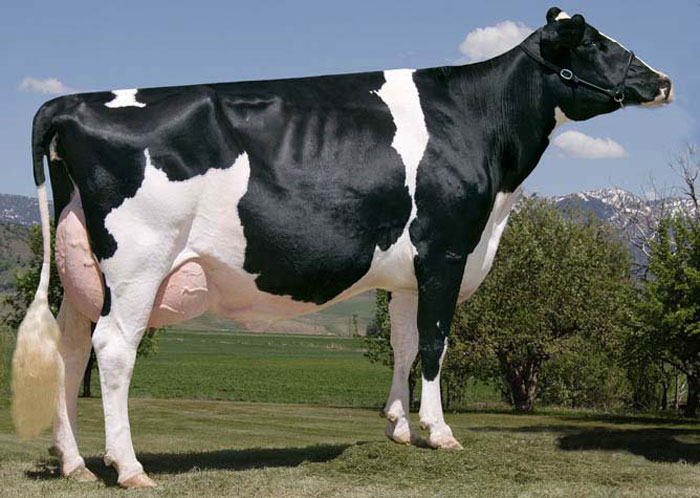
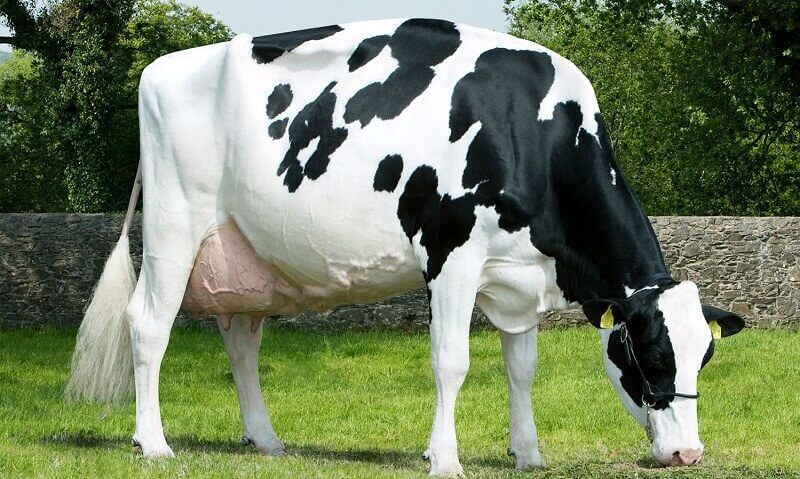
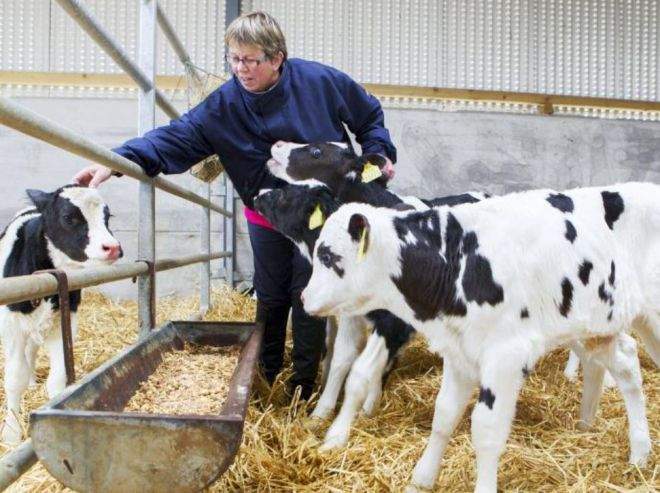

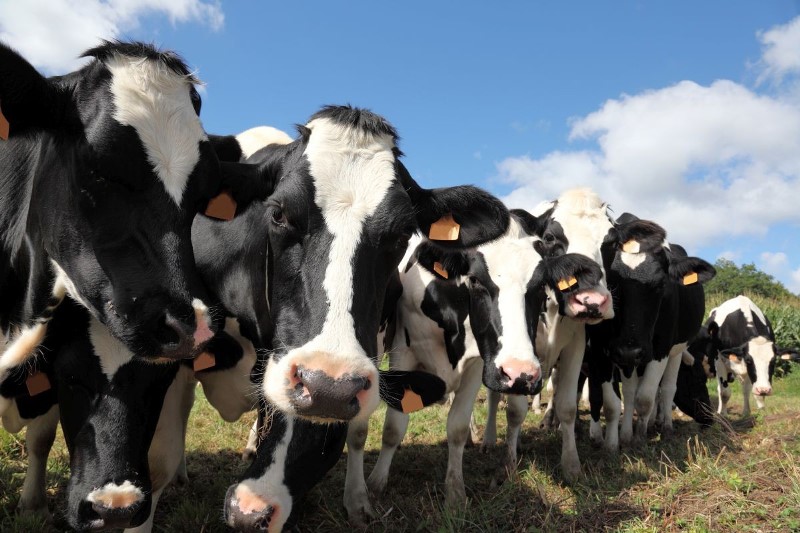
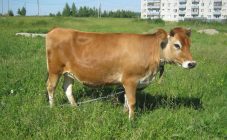
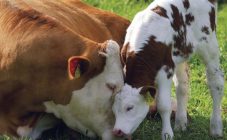
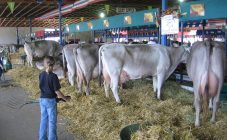
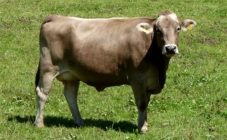

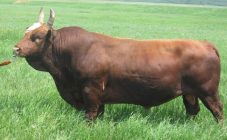







How much do Holstein bull calves gain weight in 4-5 months?